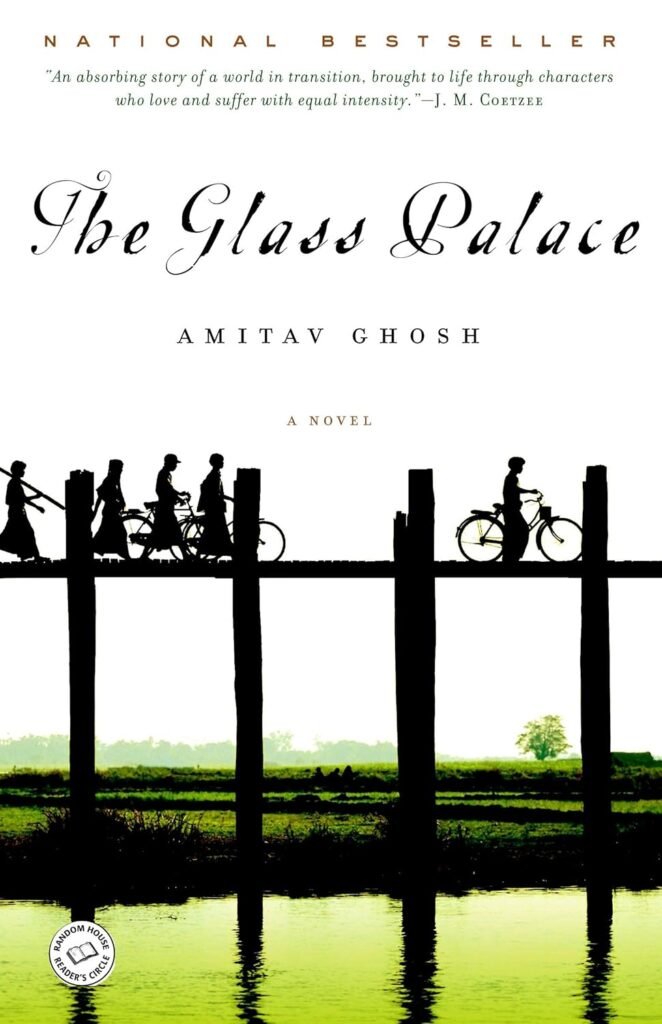The Glass Palace: Powerful History Undermined by Flat Characters

On a recent trip to Washington, DC, I carried Amitav Ghosh’s The Glass Palace with me. Ten hours of flying time seemed like the right setting for a long, ambitious novel. At 486 pages, it promised a rich journey through colonial Burma, India, and Malaya.

Reading the book, however, felt uneven. At times the narrative moved quickly, pulling me into battles, invasions, and sweeping political shifts. At other times, it dragged. The prose became dense, and I found myself trudging slowly, waiting for momentum to return.
The reason, I realized later, lies in the balance between history and fiction.
Ghosh writes history with mastery. The fall of Mandalay, the exile of King Thebaw and Queen Supayalat, and the growth of the teak and rubber industries are described with clarity. His account of World War II in Burma—Japanese invasions, mass displacements, and Indian soldiers caught between two sides—feels both vivid and urgent. These sections shine with energy and context. They ground the novel in events that shaped millions of lives.
The fictional storyline, however, feels weaker. Rajkumar’s rise from orphan to timber merchant should have carried emotional power. Instead, his story often reads as a flat sequence of actions: “he did this, she did that”. His relationship with Dolly, the orphaned queen’s attendant who becomes his wife, feels forced. Their children, too, seem more like placeholders than fully developed people. Characters often serve the plot rather than living within it.
That imbalance makes the book feel like two works stitched together. On one side is a strong historical novel, rich in setting and global detail. On the other side is a family saga that never quite takes root.
Still, the book is not without beauty. Ghosh paints landscapes and moments with sharp precision. Uma Dey, the widowed Indian woman who joins the freedom movement and travels the world, remains one of the most compelling characters. Through her, we see both the reach of empire and the early sparks of resistance.
Critics share similar views. Many praise The Glass Palace as an epic that captures Southeast Asian history with rare depth. They admire its scope and ambition. Yet they also note its flaws: underdeveloped characters, dialogue that slips into lectures, and an emotional distance that weakens its impact.
In the end, The Glass Palace feels like two books in one – a fictional family saga that sometimes struggles to match the richness of its historical canvas, and a fictional family saga that sometimes struggles to match the richness of its historical canvas.
Would I recommend it? Yes—but with a caveat.
Read it less as a character-driven novel (and keep moving if you miss a detail here and there), and more as a literary history of empire, displacement, and the human cost of colonialism.
Approach it with patience, and its rewards—though uneven—are worth the journey.
In the end, The Glass Palace reminds us that empires rise and fall, fortunes shift, and ordinary people live within those tides. The history endures; the characters fade.
👁️ 234 views


4 Comments on “The Glass Palace: Powerful History Undermined by Flat Characters”
Excellent review! I love Ghosh’s books and have this one on my To Read List. Thank you for the “heads up!”.
Thanks! Some parts of the book were definitely tough to get through—we’ve had our share of challenging reads and sections before. What kept me going was the thought of reaching the end.
It’s remarkable to pay a visit this web site and reading the views of all colleagues about this piece of writing, while I am also
eager of getting knowledge.
Thanks for your kind words and glad you are enjoying what I have to say.